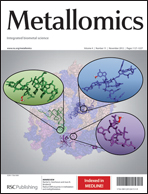Metal-based nanoscale particles possess unique optoelectronic or magnetic properties that make them highly promising as imaging agents in cancer therapy research. The fate of nanoparticles in vivo and particularly, the delivery to tumours are closely related to their interactions with plasma proteins. Furthermore, proteins can be used to modify the nanoparticle surface in order to facilitate active targeting to tumours. Therefore, there is an ongoing need for new and more capable analytical methodologies to characterize the protein–nanoparticle binding. Due to the small-sample volume requirement, high degree of resolution and, most importantly, mild, species-friendly separation conditions, capillary electrophoresis (CE) is gaining increasing popularity in the analysis of protein–nanoparticle interaction. This perspective article highlights the potential of CE in studying reactions associated with protein-mediated transformations of nanoparticles, with the focus on quantum dots, gold and iron oxide nanoparticles. Different ways by which CE can be applied to such monitoring are summarized and critically assessed using a representative coverage of recent publications.

You have access to this article
 Please wait while we load your content...
Something went wrong. Try again?
Please wait while we load your content...
Something went wrong. Try again?


 Please wait while we load your content...
Please wait while we load your content...